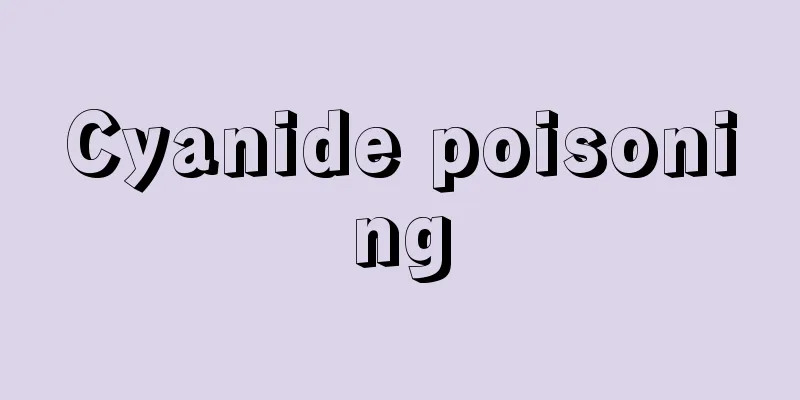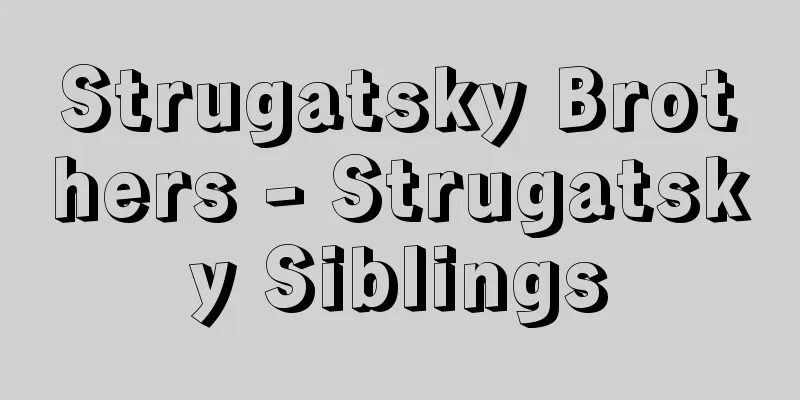Cyanide poisoning

|
Poisoning caused by hydrocyanic acid (hydrocyanic acid), potassium cyanide (potassium cyanide), or sodium cyanide (sodium cyanide). Hydrocyanic acid is a colorless liquid with a characteristic odor (almond-like). Hydrocyanic acid vapor is used to kill insects and rodents on ships, warehouses, and orchards, while sodium cyanide is used in plating and the photographic industry. Hydrocyanic acid and cyanide salts are quickly absorbed into the body, and when they penetrate the skin, absorption is aided by sweat, making them even more dangerous if there is a wound. In the body, cyanide ions inhibit the cellular respiratory enzyme cytochrome oxidase, inhibiting tissue respiration, so that the tissues cannot take in oxygen from arterial blood and fall into a state of suffocation. The central brain is particularly susceptible to this effect, and symptoms of poisoning appear acutely. Symptoms of acute poisoning include wheezing, flushing of the skin, venous distension, difficulty breathing, loss of consciousness, generalized convulsions, and death. Symptoms of chronic poisoning, seen in plating factory workers who are at risk of repeatedly inhaling low concentrations of hydrocyanic acid gas, include chronic fatigue, headache, dizziness, a metallic taste, an itchy rash, and anxiety. The lethal concentration of cyanide gas is low, and even at 110 ppm, death occurs within 30 minutes to an hour. The oral lethal dose is 50 to 100 milligrams of cyanide, 150 milligrams of sodium cyanide, or 200 milligrams of potassium cyanide. The occupational health tolerance level is 10 ppm. [Sadayoshi Shigeta] Source: Shogakukan Encyclopedia Nipponica About Encyclopedia Nipponica Information | Legend |
|
青酸(シアン化水素酸)あるいは青酸カリウム(シアン化カリウム)、青酸ナトリウム(シアン化ナトリウム)による中毒。青酸は特有の臭気(アーモンド臭)をもつ無色の液体で、青酸蒸気は船舶、倉庫、果樹園の殺虫、殺鼠(さっそ)に用い、青酸ナトリウムはめっき、写真工業などで使用される。 青酸および青酸塩は体内吸収が速く、皮膚からの侵入については汗で吸収が助長され、傷口があればいっそう危険性が高まる。生体内での作用は、シアンイオンが細胞呼吸酵素のチトクロムオキシダーゼを抑制して組織呼吸を阻害するため、組織は動脈血から酸素を摂取できなくなり窒息状態に陥る。とくに脳中枢はその影響を受けやすく、中毒症状は急性的に現れる。 急性中毒の症状は、喘鳴(ぜんめい)、皮膚の紅潮、静脈の怒張、呼吸困難、意識喪失、全身けいれんなどがみられ、死亡する。低濃度の青酸ガスを繰り返して吸入する危険のあるめっき工場作業員などにみられる慢性中毒の症状としては、慢性疲労、頭痛、めまい、金属味、瘙痒(そうよう)性の発疹(ほっしん)、不安感などがみられる。 青酸ガスの致死濃度は低く、110ppmでも30分から1時間で死亡する。また経口致死量は青酸50~100ミリグラム、青酸ナトリウム150ミリグラム、青酸カリウム200ミリグラムである。労働衛生上の許容濃度は10ppmである。 [重田定義] 出典 小学館 日本大百科全書(ニッポニカ)日本大百科全書(ニッポニカ)について 情報 | 凡例 |
<<: Production adjustment - SEISANCHOUSEI
Recommend
Oxypha japonica - Oxypha japonica
…It is found in northern Shikoku, and in the Chug...
Ocean current
It refers to the movement of seawater that has a ...
Kinsho - Kinsho
…It is widely cultivated throughout the country a...
Perchlorate explosives
An explosive containing perchlorate as an oxidizer...
Thai Ceramics - Thai Toujiki
The history of ceramics in Thailand can be divided...
Kuzuhara Pasture - Tsunahara Pasture
From the late Heian period to the Middle Ages, thi...
Emperor Suinin
The Kojiki and Nihon Shoki record him as the 11th ...
Eastern Marsh Harrier
...A species of bird in the family Accipitridae, ...
son jalisciense (English spelling) sonjalisciense
...The origin of the word is unknown, but it is s...
Comprehensive River Development Method
Historically, they can be divided into four categ...
Komai clan of castle
...From the Muromachi and Sengoku periods through...
Kongorinji Temple
A Tendai sect temple located in Matsuoji, Aisho-c...
Weber, EH (English spelling)
…Born in Wittenberg. He studied mathematics at th...
Modama - Modama
A large woody vine belonging to the subfamily Mimo...
Sexual insertion - Oshouneire
…Generally, the objects of worship for the ship s...









